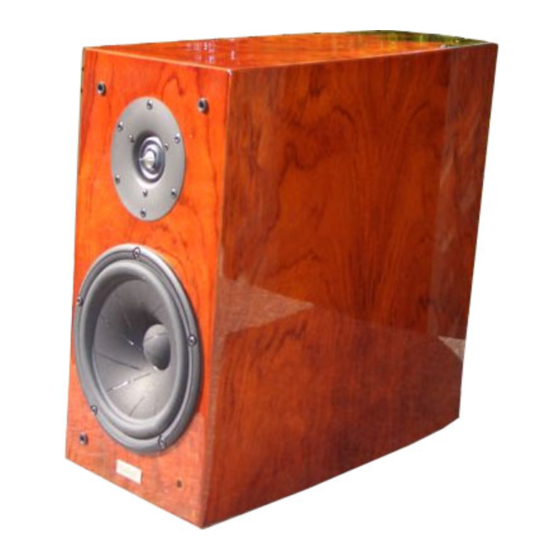
Stay Connected
Connecting to your amplifier
The Gamut L series speakers are equipped with two pairs of
terminals placed on the aluminium panel on the rear side of the
speaker.
The lower pair is for low frequency input, and the higher pair is
for the high frequency input.
Red is the positive input and White the negative input.
It is very important that both speakers are connected
in phase, meaning the positive input from each channel
on the amplifier must be connected to the same input
terminal on the speakers, and preferably the positive
terminal, this will assure you the right sound quality from your
sound system.
The terminals on your amplifier are normally colour coded.
If in doubt check your amplifier's user manual to make
sure which terminal is the positive/negative output ter-
minal.
Your GamuT speakers can be connected in three different ways:
Single-wiring (one cable for each channel)
Using one cable for each speaker, you will have to make a
connection between the high frequency input terminal, and the
low frequency input terminal.
Preferably you can use a part of the same cable you use from the
amplifier to the speaker.
If this is not possible, and you will have to use a lower quality
cable between the inputs, we recommend you connect the cable
from the amp to the tweeter input terminals.
Instruction: Cut an appropriate piece of cable app. 5" or 12-15 cm.
Separate the marked wire and the unmarked wire to get two sep-
arate pieces of wire, and strip app. 1" or 12-15 mm of the insula-
tion at each end (4 ends).
Now connect the positive Low frequency input terminal to the
positive High frequency input terminal using one of the premade
wires.
With the second piece of pre-made wire, connect the negative
Low frequency input terminal to the negative High frequency
input terminal
Bi-wiring
(one separate cable for each input terminal)
Using separate cables for each pair of input terminals you have
the option of lowering the coloration/smearing between the
high and low frequencies that happens in transferring the signals
from the amplifier to the speaker.
We recommend you use the same cable type for both the high
frequency input and the low frequency input, to avoid changing
the delicate balance these speaker are designed to have.
Instruction: Connect the two sets of cables to your speaker
terminals, one cable to the high frequency input terminal and one
cable to the low frequency input terminal.
Make sure the marked wire is connected to the positive
input terminals, and the unmarked wire to the negative
input terminals.
Connect the two cables to the amplifier making sure both marked
wires are connected to the positive output terminal, and both
unmarked wires are connected to the negative output terminal.
If your amplifier has two sets of output terminals, use one set for
one of the cables and the second set of output terminals for the
second pair of cables.
Bi-amping (separate amplifiers (with separate cables) for
each pair of input terminals)
Using Separate amplifiers for each input terminal is the optimum
solution if you want to assure the maximum performance of the
speakers.
None of the high frequency signals will then be harmed by the
high currents needed to drive the low frequency section, and an
absolute maximum of performance is obtained.
Instruction: Connect the two sets of cables to your speaker
terminals, one cable to the high frequency input terminal and one
cable to the low frequency input terminal.
Make sure the marked wire is connected to the positive
input terminals, and the unmarked wire to the negative
input terminals.
Connect one of the two cables to one of the amplifiers making
sure the marked wire is connected to the positive output
terminal, and the unmarked wire is connected to the negative
output terminal.
Now connect the second cable to the second amplifier in the
same way.
We strongly recommend using two identical amplifiers
to ensure perfect time and phase coherence between
the high and low frequency drivers.
6
